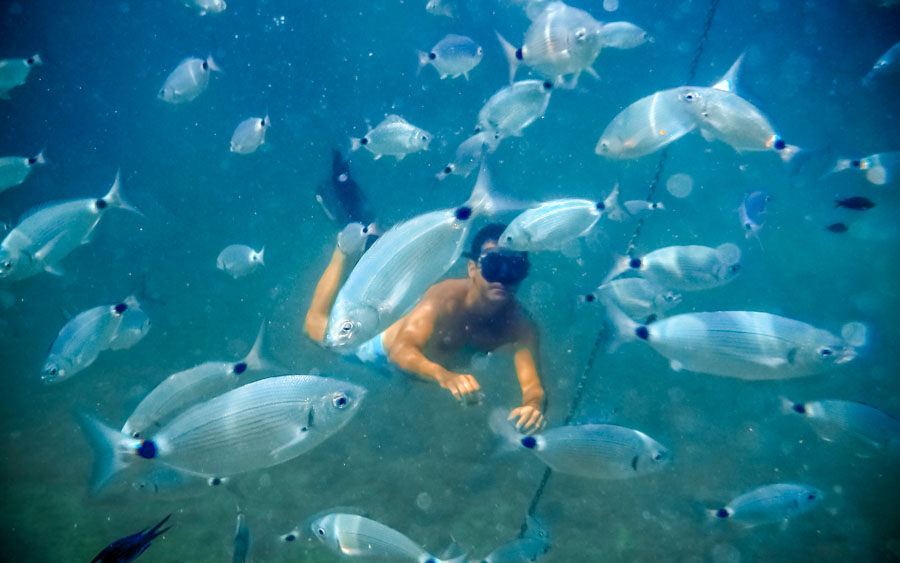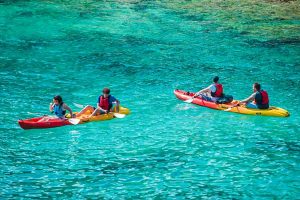The fish of Menorca are within your reach. One of the great attractions of the excursion that we propose at Rutas Kayak Menorca, which is the Cave Route, is that you will be able to see all the most common fish of Menorca. Snorkelling will ensure that you will be able to see the fish that inhabit the Minorcan coast, something that is always nice to see beyond the seabed.
Content of the post:
ToggleThe island's sea is ideal for Menorca's marine wildlife
The posidonia meadows are key to the survival of the species, since they are an estimated 1,000 animals and 400 plants live in them.. In addition, its roots keep the sediment immobile, which is very useful for creating oxygen-producing zones.
And the most curious thing is that it is a plant which does not exist in any other oceanonly in the Mediterranean. The seabed where you will go on the excursion with Rutas Kayak Menorca is made of posidonia, rock and sand, ideal to see many different species.
Typical Menorcan fish on the kayak route
Below, we leave you the description and images of types of fish you will see with your kayak rental in Menorca:
1. Maiden
It is very common in the Mediterranean. Its main characteristic is that it has no scales. It is small, with a tiny mouth, slim and in a multitude of colours. Those that live in shallow water are darker, brownish, and those that come from deeper water are more vividly coloured.


2. Sea bream
Many consider it to be the 'first cousin' of the dorada. Silver and with several vertical stripes from head to tailThey are prized by fishermen for their white, juicy flesh.
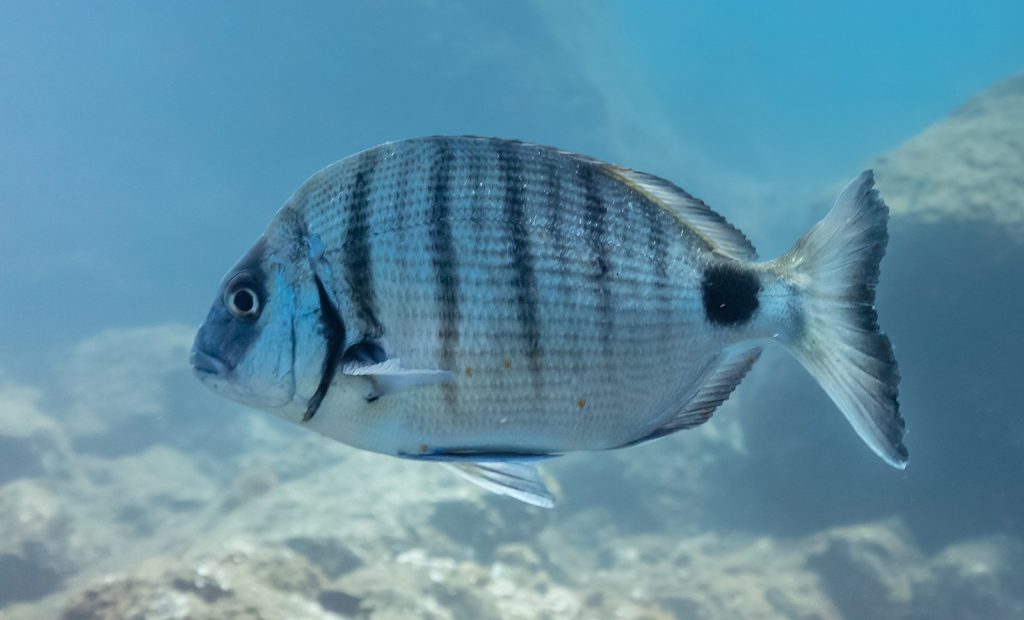

3. mojarra
In Menorca we call it 'Variada'. It is the same as the sea bream but, instead of having several dark stripes, it has only two: on the head and on the tail.


4. Raspallón
Also called 'Esparrall'. Like the Mojarra, but without dark stripes on its body. Very common on the Menorcan coast.


5. Red mullet
They are usually seen at greater depths, but in Cales Coves, where you can snorkel, there are usually some. With their typical 'moustaches', they are always digging in the sand. in search of small crustaceans.


6. Salpa
Oval in body, they are easily recognised by their golden stripes and greenish tail. The curious thing about this fish is that, according to some reports, can produce hallucinations similar to LSD in case of ingestion. The reason for this is because it is always pecking at the algae, which leads to the accumulation of toxic phytoplankton.


7. Oblada
They are pure spectacle, as their voracity makes them go crazy if you throw breadcrumbs at them. In a way oval and silver to blue in colour, they are very common in Cales Coves.. They always move between waters, almost never at depth.


8. Cow
It is always touching the bottom, among rocks and posidonia, looking for shelter. With a mouth almost as big as its head, it is always on the lookout for small fish or crabs, its favourite delicacies. Brown with vertical stripes even darker, it stands out for its blue belly.


9. Herrera
In Menorcan the name changes to 'Mabre'. Elegant swimmer, it always scours the sand in search, of course, of food. It is more difficult to distinguish than the oblada, as it is not as common, but visible because of its dark vertical stripes on its whitish body.


10. Dorada
Difficult to see, but they tend to enter the coves. One of the queens of the Mediterranean and one of the stars of the FISH MARKETSis easily recognisable by its golden foreheadhence its name.
It is very typical to fish for bream on a rod.
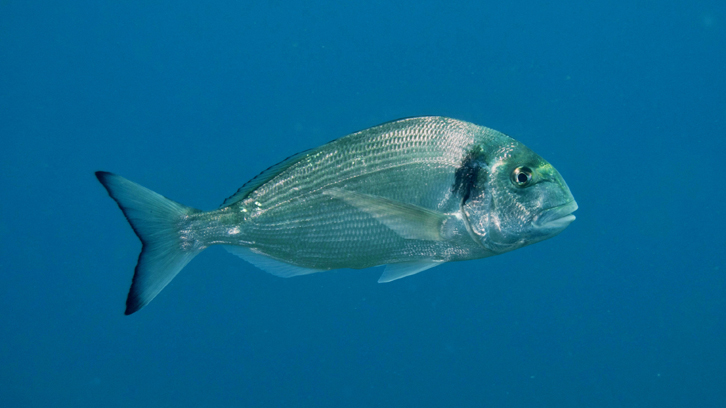

11. Pruning
In Menorcan we call it 'Tacó' or 'Pedaç'. It is similar to a sole, but always small in size. Like all this type of fish, they always live stuck to the sand, with a high camouflage capability. Unlike sole, it has a lot of bone!


12. Castanet
In Menorcan we call it, in a colloquial way, as '.moritobecause of their black colour. When they are hatchlings, they are bright blue, a spectacle. They inhabit between waters and are not eaten.


13. Green fish
Here we call it 'Fadrí'. It is a species that, with so many colours, could appear in a report on Pacific fish. Small-mouthed like the maiden, it is very nice to seebut it is not usually eaten.
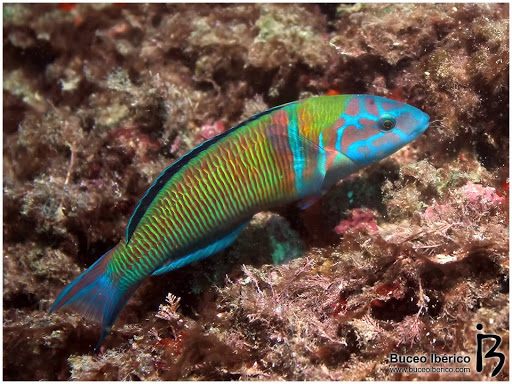

We hope you liked them and let us know if you see any, have fun snorkelling!

